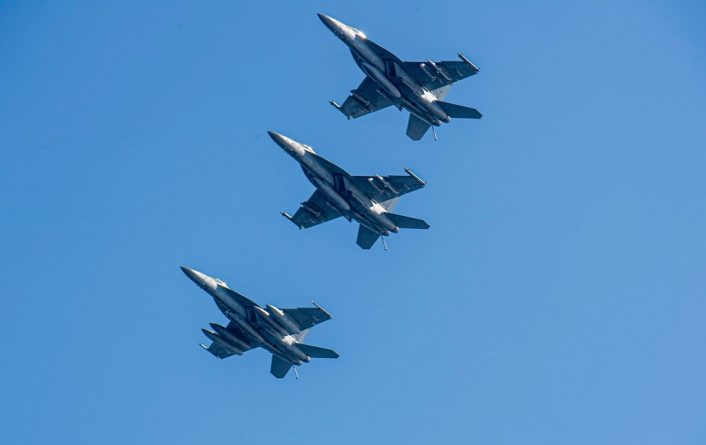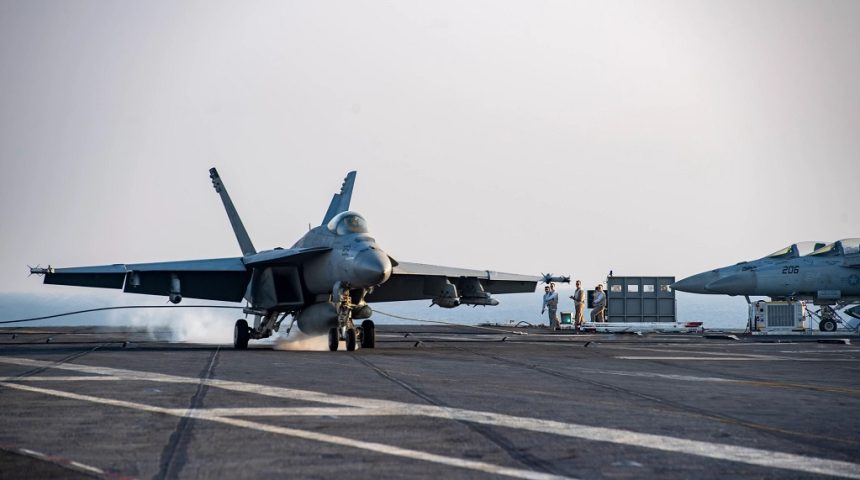F/A-18 Super Hornets from the Eisenhower Carrier Strike Group and the USS Laboon shot down twelve one-way attack drones, three anti-ship ballistic missiles, and two land attack cruise missiles fired by Houthis during the latest attacks.
Once again, U.S. assets countered another wave of attacks launched by Houthi forces in the Red Sea. This time, according to the statement released by the U.S. Central Command, the attacks were countered by the Arleigh-Burke class guided missile destroyer USS Laboon and F/A-18 Super Hornets from the Eisenhower Carrier Strike Group, shooting down twelve one-way attack drones, three anti-ship ballistic missiles, and two land attack cruise missiles.
The engagement, which lasted 10 hours, began at approximately 6:30 a.m. (Sanaa time) on December 26, and was concluded without damage to ships in the area or reported injuries. CENTCOM did not release other details, however the event is notable as it is the first where air assets have been involved in the US response against the attacks.
U.S. assets, to include the USS LABOON (DDG 58) and F/A-18 Super Hornets from the Eisenhower Carrier Strike Group, shot down twelve one-way attack drones, three anti-ship ballistic missiles, and two land attack cruise missiles in the Southern Red Sea that were fired by the… pic.twitter.com/vRQ5e6Au6d
— U.S. Central Command (@CENTCOM) December 26, 2023
It is not clear, however, the extent of the Super Hornets’ involvement. For an instance, it’s not known how many targets (and which targets) were shot down by the USS Laboon and how many by the F/A-18s, only the total has been disclosed. What can be said for certain is that this is the second time the F/A-18E/F scores air-to-air victories, after the first one against a Syrian Su-22 Fitter in 2017.
The APG-79 AESA radar allows the F/A-18 to target small targets such as drones and cruise missiles, passing the targeting data to either its air-to-air missiles or other air, land and maritime assets in the area. The Super Hornet might have then employed its AIM-9X Sidewinder missiles or, if the IR signature was too small, AIM-120 AMRAAM radar-guided air-to-air missiles to shoot down the drones or the cruise missiles.
Photos released on the DVIDS (Defense Visual Information Distribution Service) network show the F/A-18s flying armed patrols with an armament of two AIM-9X, two AIM-120 and two GBU-54 Laser JDAM, in addition to the targeting pod and an external fuel tank. This loadout is quite standard and has already been used extensively in the past few years by the U.S. Navy, however the service might opt for carrying more air-to-air weapons should the counter-UAS role of the Super Hornet increase while in the Red Sea.










